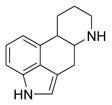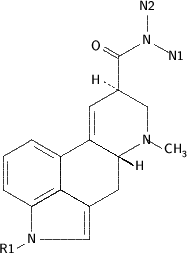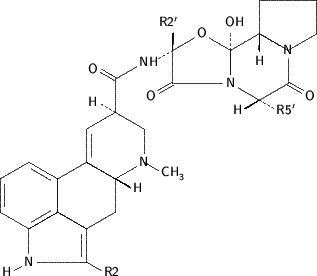What causes migraine headaches?
Migraine headaches seem to be caused by changes in the amount of a chemical called serotonin (say: sair-uh-TONE-in) you have in your body. When serotonin levels are high, your blood vessels shrink. When serotonin levels are low, your blood vessels swell. This swelling can cause pain and other problems. Many things can affect the level of serotonin in your body, including certain foods and your level of blood sugar. In women, changes in the amount of a hormone called estrogen (say: ESS-tro-jen) can affect serotonin levels.
What does a migraine feel like?
Migraines can cause very bad pain that can get in the way of your normal routine. Migraines aren't the same for everyone. Some symptoms include:
* Throbbing or dull pain on one or both sides of your head
* Stomachache or throwing up
* Changes in how you see, such as blurry vision or blind spots
* Being bothered by light, noise, or smells
* Feeling tired or confused
* Stuffy nose
* Feeling cold or sweaty
* Stiff neck
* Feeling dizzy
Are there different kinds of migraines?
Yes. The most common are classic migraines and common migraines.
Classic migraines start with a warning sign called an aura (say: AWR-uh). An aura can change the way you see things. You may see flashing lights and colors, or you might not be able to see things to your side. Auras last about 15 to 30 minutes. Pain usually comes after the aura, but sometimes the pain and aura happen at the same time, or the pain never happens. The pain of classic migraines might be on one side of your head or on both sides. You may also have a strange prickly or burning feeling, or feel weak on one side of your body. You may have trouble talking. You may also feel depressed, grouchy, and restless.
Common migraines don't start with an aura. Common migraines may start more slowly than classic migraines and last longer. The pain of common migraines may be on only one side of your head.
How long do migraines usually last?
Migraines may last for only a few hours or up to three days. They may happen only once or twice a year, or as often as daily.
What things may set off a migraine?
Certain things can set off migraines in some people. These include:
* Strong smells, bright lights, or loud noises
* Changes in weather
* Being tired, stressed, or depressed
* Changes in the time you go to sleep or wake up
* Missing meals or fasting
* Menstrual periods, birth control pills, or hormones
Some foods also can trigger migraines in some people. These include:
* Aged, canned, cured, or processed meat (such as bologna, ham, herring, hot dogs, and pepperoni)
* Aged cheese
* Alcoholic beverages, especially red wine
* Aspartame (some brand names: NutraSweet, Equal)
* Avocados
* Beans, including pole, broad, lima, Italian, navy, pinto, and garbanzo
* Brewer's yeast, including fresh yeast coffee cake, doughnuts, and sourdough bread
* Caffeine (in excess)
* Canned soup or bouillon cubes
* Chocolate, cocoa, and carob
* Cultured dairy products, such as buttermilk and sour cream
* Figs
* Lentils
* Meat tenderizer
* Monosodium glutamate (also called MSG)
* Nuts and peanut butter
* Onions, except small amounts for flavoring
* Papaya
* Passion fruit
* Pea pods
* Pickled, preserved, or marinated foods (such as olives, pickles, snack foods)
* Raisins
* Red plums
* Sauerkraut
* Seasoned salt
* Snow peas
* Soy sauce
How are migraines treated?
There are two types of medicines for migraines. Some medicines are used to help get rid of the pain. You should start taking these medicines as soon as you think you're getting a migraine. The other group includes medicines that are used to stop headaches before they happen.
Can nonprescription medicines help relieve the pain?
Yes. Nonprescription medicines (also called over-the-counter medicines) can help migraine pain. They include aspirin, acetaminophen (one brand name: Tylenol), an acetaminophen, aspirin, and caffeine combination (one brand name: Excedrin Migraine), ibuprofen (one brand name: Motrin), naproxen (brand name: Aleve), and ketoprofen (brand name: Orudis KT).
What about prescription medicines?
People with very bad pain may need prescription medicine. A medicine called ergotamine (brand name: Ergostat) can be used alone or with other medicines (some brand names: Cafergot, Ercaf, Wigraine). Dihydroergotamine (brand names: Migranal, D.H.E. 45) is like ergotamine and also can help.
Other prescription medicines for migraines include sumatriptan (brand name: Imitrex), zolmitriptan (brand name: Zomig), naratriptan (brand name: Amerge), rizatriptan (brand name: Maxalt), almotriptan (brand name: Axert), and fravatriptan (brand name: Frova).
Many combinations of medicines (one brand name: Midrin) are also available.
If the pain won't go away, your doctor might want you to try stronger medicine, such as a narcotic (brand name: Stadol nasal spray). These medicines can be habit-forming and should be used carefully.
Can medicine help stop migraines?
Yes. Your doctor might want you to try a medicine to keep you from getting migraines if your headaches happen more than twice a month. These medicines include propranolol (brand name: Inderal), timolol (brand name: Blocadren), divalproex (brand name: Depakote), and some medicines for depression.
What else can I do to keep from getting migraines?
Try not to eat foods that seem to cause migraines for you. Stay away from other things that seem to trigger headaches. Get plenty of sleep, and try to relax.
What can I do for the pain?
Here are a few things that might help you feel better:
* Lie down in a dark, quiet room.
* Put a cold, damp cloth over your forehead.
* Massage your scalp using a lot of pressure.
* Put pressure on your temples.
COPYRIGHT 2005 American Academy of Family Physicians
COPYRIGHT 2005 Gale Group




